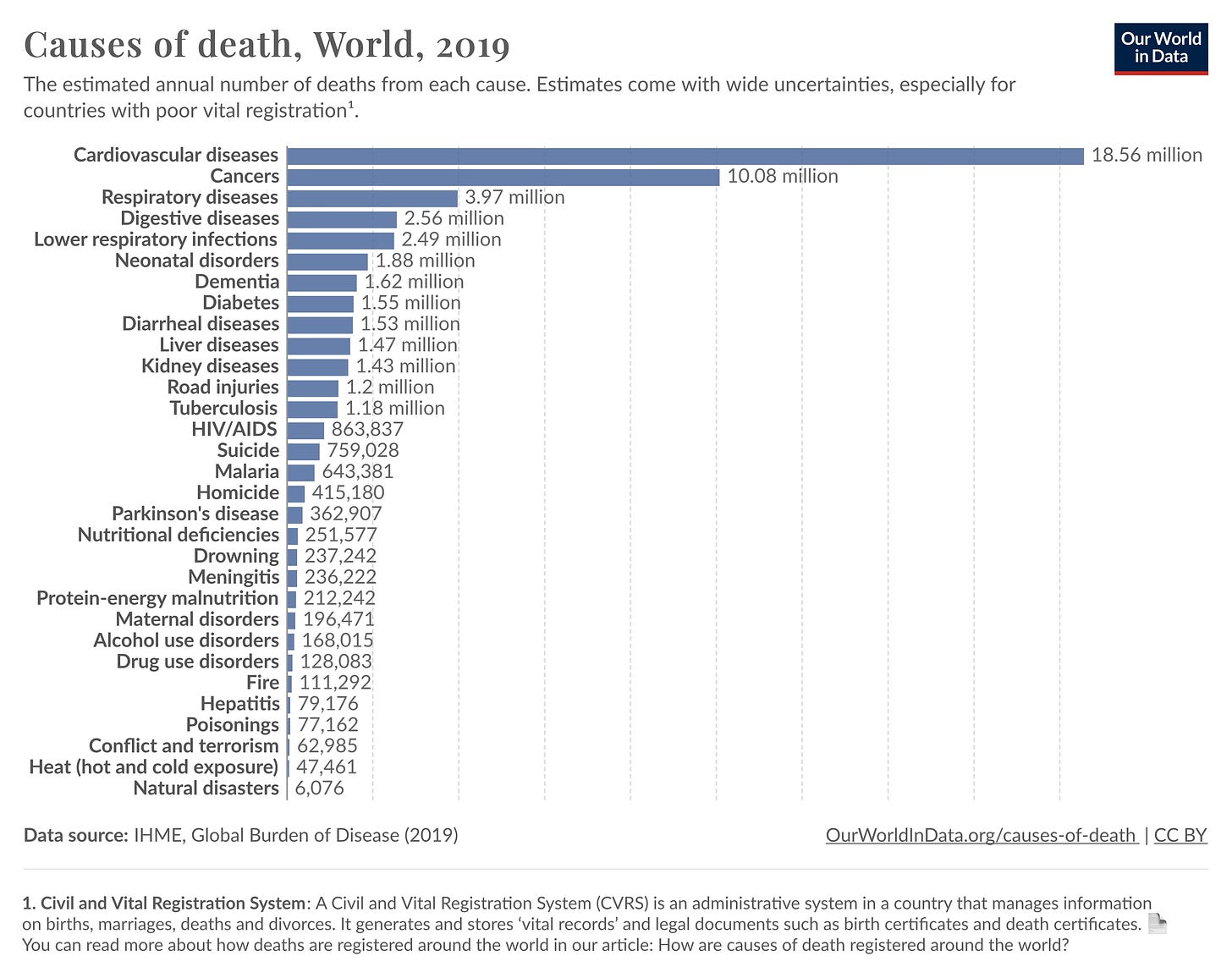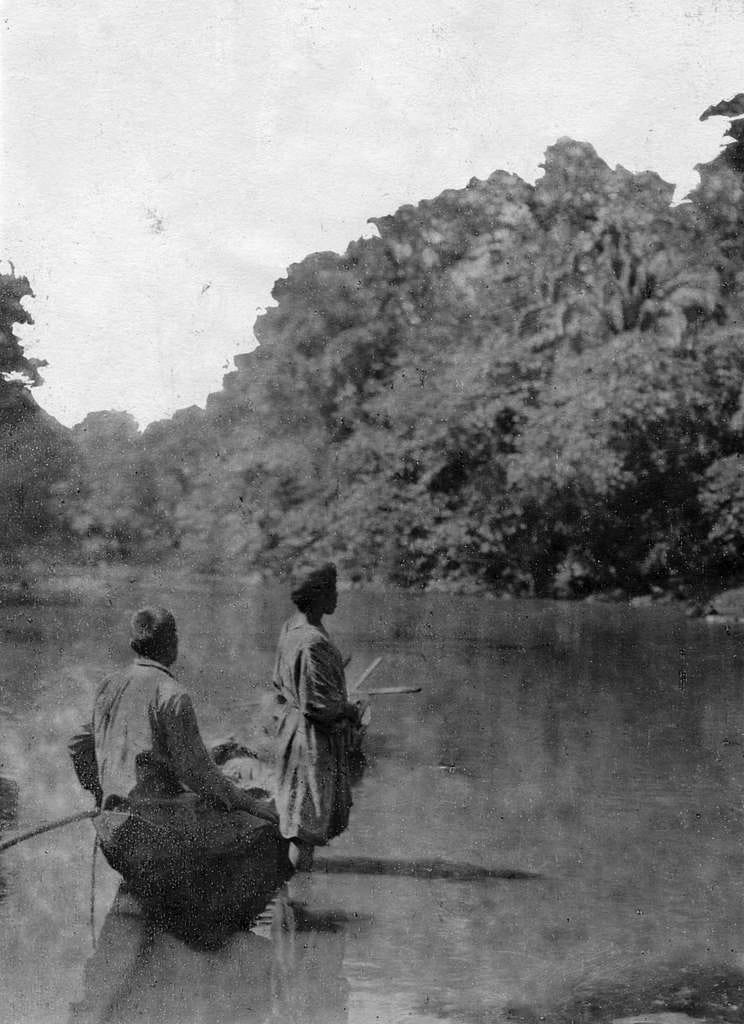Beating the Odds: Inside the Tribe with a Near-Zero Rate of Heart Disease.

Cardiovascular disease is the leading cause of death worldwide.
It kills almost twice as many people globally when compared to all cancers combined.

Over 80% of early heart disease is preventable.
However, most adults will start to develop advanced plaque in their coronary arteries early in life.
By age 66, more than half of all females will have evidence of advanced plaque in their coronary arteries, as seen on a CT calcium score. For males, this happens about a decade earlier at age 55 1.
But are there groups who buck this trend and rarely develop coronary artery disease and, by extension, do not die from it early in life?
The answer is yes.
Most of you will have heard of ‘Blue Zones’, where groups of people appear to live exceptionally long lives.
Areas such as Okinawa, Loma Linda and parts of the Mediterranean frequently appear on these ‘Blue Zone’ lists.
But most people have not heard of one of the Tsimane Tribe in Bolivia, which has some of the lowest rates of heart disease in the world.
(As a side note, many Blue Zones are thought to be more a function of falsified or improper record keeping, but that’s an article for another day).

Tsimane Tribe
The Tsimane tribe are an indigenous subsistence farming group in the lowlands of Bolivia.
Over the years, various health metrics have been tracked in this tribe and have revealed exceptionally low rates of heart disease.
While the average Western male and female will develop advanced coronary artery disease by age 55 and 66, respectively, 85% of the Tsimane tribe population over 40 had no evidence of advanced atherosclerosis2.
After age 75, this figure dropped to only 75%, with only 8% having a CAC score of >100.
This is FIVE FOLD less than the average Western population.

Coronary atherosclerosis, as evidenced by an abnormal CAC score, is a measure of advanced plaque.
The real question is what the Tsimane tribe's risk factor profile looks like.
Because if we can understand that, we can attempt to emulate it and also considerably delay the onset of cardiovascular disease and our risk of an early death as a consequence of it.
Activity.
The average US adult takes 3000 - 4000 steps daily, which equates to about 1.5 to 2.0 miles3. They are also inactive or seated for 9.5 hours per day, mostly watching television, at work or using an electronic device4.
The Tsimane tribe’s activity patterns are a world apart.
Less than 10% of daylight hours are spent sedentary.
Females are physically active for between 4 to 6 hours each day. Males are physically active for between 6 to 7 hours per day5.
Even at rest, the Tsimane tribe’s energy expenditure is higher by about 20 to 47% compared to an average Western population6.
Even at rest the Tsimane tribe are burning more calories than most of us.
Blood Pressure
Approximately 50% of all Western adults have high blood pressure7.
The majority of this high blood pressure is undiagnosed and, therefore, untreated.
As a consequence, high blood pressure is the single most important risk factor for early death worldwide8.
Once again, the Tsimane Tribes' blood pressure profile over their lifetime looks considerably different to the average Western population.
The average systolic blood pressure for the Tsimane tribe is 120 mmHg, and this data includes those over 80 years of age.
When only evaluating those under 60, the average systolic blood pressure was 112 mmHg9.
Atrial fibrillation, a common consequence of high blood pressure in Western populations, is almost unheard of in the Tsimane Tribe.
The reason for such low blood pressures in this population is likely to do with the increased elasticity of their arteries. This greater elasticity of their arteries translates into lower blood pressure.
Compared to western adults, the Tsimane tribe members’ arteries were between 57 and 85% more elastic10.
Dementia
Up to 40% of dementia cases could be prevented by focusing on modifiable risk factors 11. Those with high blood pressure from midlife have twice the risk of developing dementia over a 25-year follow-up 12.
The Tsimane tribe, in comparison, have some of the world’s lowest reported rates of dementia, with a crude prevalence of 1.2% 13.
In most Western populations, dementia consistently ranks as a leading cause of death.
For the Tsimane tribe, dementia is rarely, if ever, an issue.
Lipids
Hyperlipidemia is a primary risk factor for the development of atherosclerosis.
The average Non-HDL cholesterol for western populations is 3.6 mmol/l (140 mg/dl)
The Tsimane tribe, on average, have a far less atherogenic lipid profile.
The average Non-HDL cholesterol is 2.9 mmol/l (112 mg/dl), which equates to the 20th percentile.
For other significant risk factors, the trend is also the same, with almost nonexistent rates of obesity, abnormal glycemic control and very low rates of smoking14.
Diet
When I discuss the Tsimane population, one of the first questions I get is, “What kind of diet do they eat?”.
Of all the aspects of their health metrics, this is the one that ruffles the most feathers.
The Tsimane tribe eat a high carbohydrate and low saturated fat diet combined with wild game and fish15. In terms of percentages, 72% of calories are generally consumed as carbohydrates, 14% as protein and the remaining 14% as fat.
This does not mean everyone should eat this type of diet.
It just means it is entirely possible to eat this type of diet and have absolutely optimal cardiovascular health.
So, should we all adopt a hunter-gatherer Bolivian tribal lifestyle?
In my view. No.
But it does tell us that following many of their patterns of activity and maintaining lifelong low blood pressure in the setting of good lipid values is a recipe for very low rates of heart disease.
Holding these metrics as our target can shape how we can minimise our risk of heart disease in an industrialised western setting.
But if you want to go tribal, I look forward to reading your book.
Minimising cardiovascular risk is possible.
We just have to be clear about what risk factors we need to optimise, and the Tsimane tribe provide some incredibly useful clues on how to do so.
Distribution of coronary artery calcium by race, gender, and age: results from the Multi-Ethnic Study of Atherosclerosis (MESA). Circulation. 2006 Jan 3;113(1):30-7.
Coronary atherosclerosis in indigenous South American Tsimane: a cross-sectional cohort study. Lancet Vol 389 April 29, 2017
https://www.mayoclinic.org/healthy-lifestyle/fitness/in-depth/10000-steps/art-20317391#:~:text=The%20average%20American%20walks%203%2C000,a%20day%20every%20two%20weeks.
Sedentary Behavior in U.S. Adults: Fall 2019. Med Sci Sports Exerc. 2021 Dec 1;53(12):2512-2519.
Coronary atherosclerosis in indigenous South American Tsimane: a cross-sectional cohort study. Lancet Vol 389 April 29, 2017
High resting metabolic rate among Amazonian forager-horticulturalists experiencing high pathogen burden. Am J Phys Anthropol. 2016 Nov;161(3):414-425.
https://www.cdc.gov/bloodpressure/facts.htm#:~:text=Nearly%20half%20of%20adults%20have,are%20taking%20medication%20for%20hypertension.
High blood pressure: the leading global burden of disease risk factor and the need for worldwide prevention programs. Curr Hypertens Rep. 2013 Jun;15(3):134-6.
Very Low Prevalence and Incidence of Atrial Fibrillation among Bolivian Forager-Farmers. Ann Glob Health. 2021 Feb 16;87(1):18.
Abstract 13719: Minimal and Delayed Age-Related Increase of Arterial Stiffness Among Tsimane Forager-Horticulturalists. Circulation. 2023;148:A13719
Dementia Prevention, Intervention, and Care: 2020 Report of the Lancet Commission. Lancet 2020, 396, 413–446.
Blood pressure from mid- to late life and risk of incident dementia. Neurology. 2017 Dec 12;89(24):2447-2454.
Prevalence of dementia and mild cognitive impairment in indigenous Bolivian forager-horticulturalists. Alzheimers Dement. 2023 Jan;19(1):44-55.
Coronary atherosclerosis in indigenous South American Tsimane: a cross-sectional cohort study. Lancet Vol 389 April 29, 2017
Coronary atherosclerosis in indigenous South American Tsimane: a cross-sectional cohort study. Lancet Vol 389 April 29, 2017




